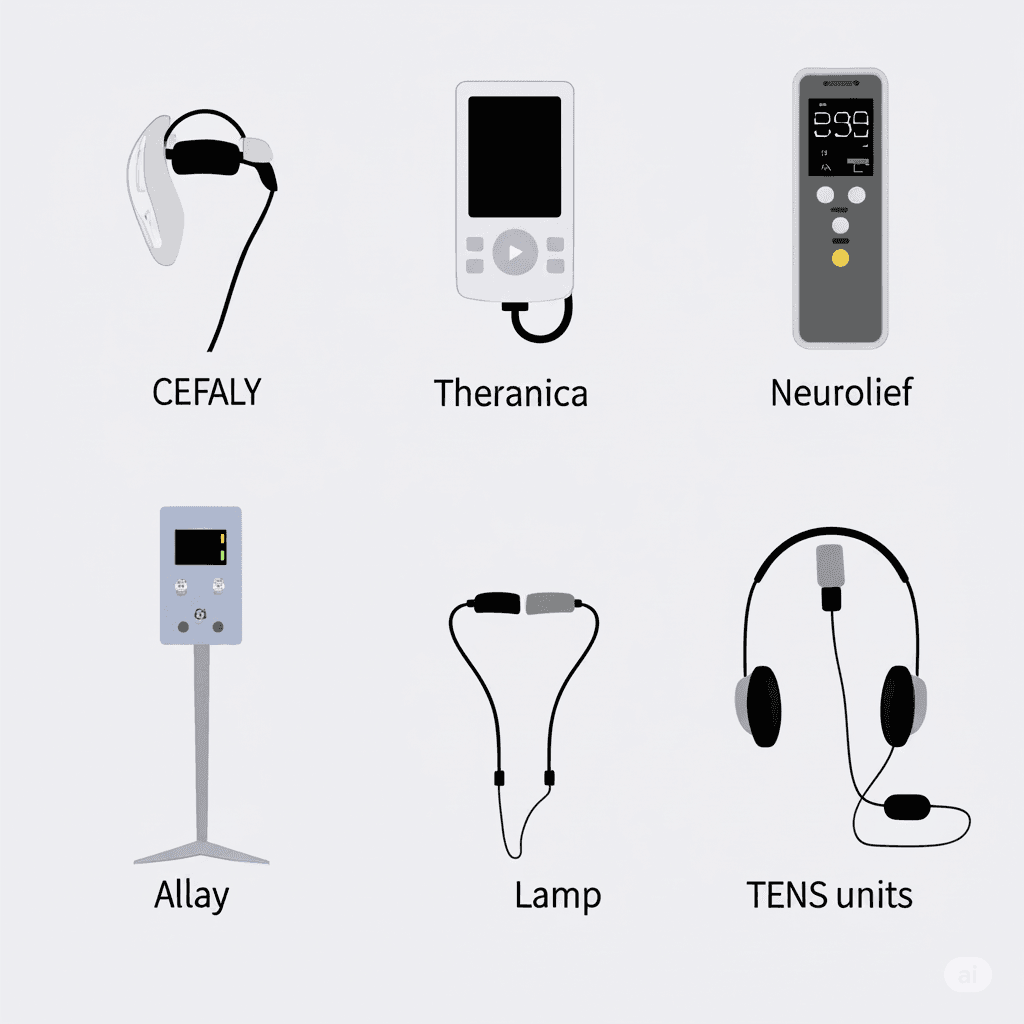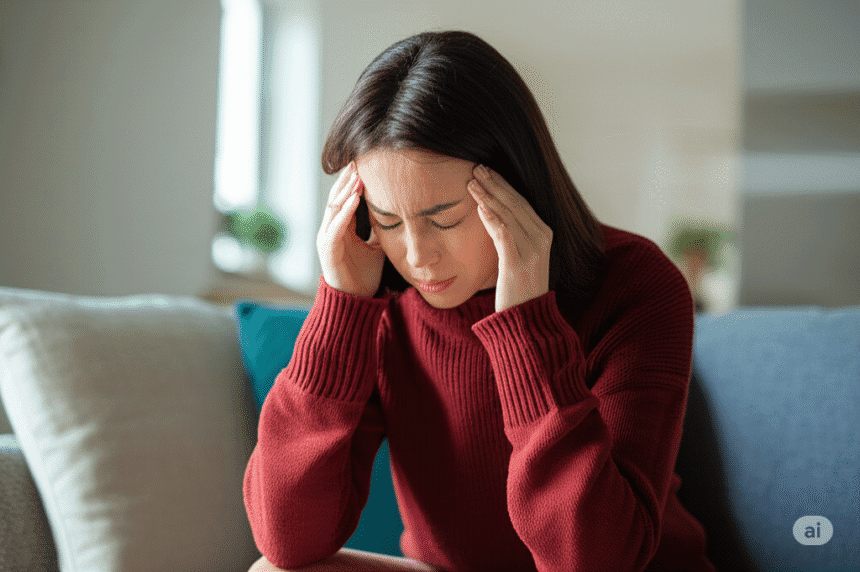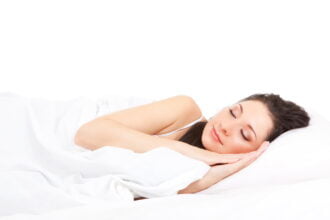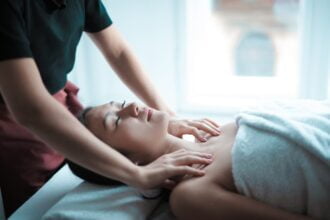If you want the convenience of migraine relief from home, you are not alone. More people are turning to Food and Drug Administration (FDA) cleared, noninvasive devices for migraine relief at home that you can use anywhere or even on the go. Whether you are looking to prevent severe neurological pain attacks or stop one mid-attack, there is a device that could fit your routine and symptoms.
- 5 Home Migraine Management Devices
- Comparing Home Relief Devices
- What to Look for in Migraine Relief Devices
- Type of Migraine You Experience
- Treatment vs. Prevention
- FDA Clearance
- Comfort and Convenience
- Budget and Reusability
- FAQs
- Do I Need a Prescription for These Devices?
- How Long Do These Devices Take to Work?
- Can I Use These Devices With My Medication?
- Are There Any Side Effects?
- Which Device Is Best for Everyday Use?
- A Smarter Way to Manage Your Migraine
Learn about the five top-rated options worth your attention and find out what matters when choosing a migraine relief device.
5 Home Migraine Management Devices
Whether you prefer an electrode, an armband or a convenient light to help dispel pain and other symptoms of neurological headaches, these five devices for at-home migraine management are among the best.

1. CEFALY
The Dual device from CEFALY is a go-to option for many people who want reliable, drug-free treatment. It is a small, wearable gadget placed on your forehead, just above the eyebrows. It attaches with a self-adhesive electrode and sends gentle electrical pulses to your trigeminal nerve — a major player in pain. The sensation feels like a soft vibration or tapping, which most users find soothing after a few sessions.
The real appeal of CEFALY is its dual-mode functionality. You can use the 20-minute program daily to help prevent attacks or the 60-minute mode during a migraine to manage symptoms. The settings are simple, and once it is in place, you can lie down or go about your day. Many people report significantly reduced attack frequency and intensity after consistent use.
CEFALY is FDA-cleared and backed by multiple studies. It is also rechargeable and portable enough to take with you when you travel. If you are looking for a daily habit to build into your routine, this one fits seamlessly, especially for those who want to avoid medication.
2. Theranica
Theranica’s Nerivio offers a smart, discreet option for treating migraines on the go. Instead of targeting the head directly, the Nerivio device straps around your upper arm and uses remote electrical neuromodulation (REN) to stimulate peripheral nerves. The stimulation sends signals up the spinal cord and encourages your brain to activate its natural pain regulation systems.
You control the device entirely through a smartphone app. Sessions last an average of 45 minutes, and the app lets you adjust the intensity based on your comfort level. It also includes a built-in migraine diary so you can track triggers, symptoms and effectiveness over time. If you are always on the move, Nerivio’s portable design and low profile make it easy to wear under clothing, though the company recommends using it at home.
Because it is designed for acute treatment, you should use Nerivio as soon as you feel the first signs of an attack. It does not work preventively but has a strong track record for quick, non-medicated relief. You need a prescription, but the company offers telehealth appointments to streamline the process. Overall, it is a good match for people with moderate to severe migraines who want relief without the side effects of medication.
3. Allay Lamp
Instead of wearable tech, the Allay Lamp is a soft green lamp you place near your bed, desk or couch. The light it emits comes from a narrow band of green wavelengths, which science shows reduces brain hyperexcitability — one of the factors that can fuel migraines.
The beauty of this lamp is its simplicity. There is no app, setup or electrodes. You just plug it in and sit near it for 30 to 60 minutes, letting the light gently work on your nervous system. Some people even sleep with it on, reporting fewer nighttime headaches and better recovery from photophobia. It is also a win for people who find screen time or fluorescent lights trigger their migraines.
The Allay Lamp is not FDA-approved as a medical device, but the tech is based on Harvard research and has been featured in neurology journals. It is also eligible for Health Savings Account spending. It does not stop an attack as quickly as something like Theranica’s Nerivio might, but it is meant to reduce daily discomfort and help your nervous system calm down over time. It is beneficial for people with chronic migraines or post-concussion sensitivity to light.
4. Neurolief
If you have already tried a few treatments and nothing seems to stick, consider Neurolief’s Relivion MG. This headset is a bit more complex than other devices on this list — it simultaneously targets the trigeminal and occipital nerves through a network of electrodes built into a padded strap that goes around your head. It is paired with an app that personalizes each session based on your pain profile.
Relivion sessions usually last between 45 and 60 minutes. The experience is more immersive than a portable device, but it is designed to deliver deeper, multi-channel stimulation and give your nervous system a bigger “reset.” You might use it in a quiet room during a break from work or at night when pain builds. It is not something you would likely wear outside, but it is one of the most comprehensive at-home options available.
To get started, you will need a prescription from a doctor on the Relivion network, and there is a learning curve to using the system effectively. If you have been frustrated by devices that did not reach the right nerves or were not strong enough, Relivion may feel like a significant step forward. It is most helpful for those with stubborn, recurring migraines that do not respond well to medications or single-point stimulation.
5. TENS Units
TENS units come from various suppliers worldwide. They are not designed specifically for migraines, but many people use them successfully to target the tension and muscle pain that often causes them. These devices are small, battery-operated machines that send mild electrical pulses through the skin using adhesive electrodes placed on your neck, shoulders or upper back. A TENS treatment can help you stop a headache before it fully develops by relaxing the muscles and disrupting pain signals.
You can buy one without a prescription at most drugstores or online. The cost is usually under $50, and a wide variety of models cater to your desired intensity. Choose different massage modes and session lengths and use the unit for other areas of the body, like your lower back or legs.
While it is not a migraine-specific device, a TENS unit can still be an essential part of your toolkit, especially if your headaches are triggered by posture, long hours at a desk or stress-related muscle strain. It is a solid, low-risk starting point if you are exploring non-medication options.
Comparing Home Relief Devices
Here is a side-by-side look at the top devices for home migraine relief. Compare how each works, its best uses and who it suits best.
| Device | Type | Uses | How to use | Duration | Best for |
| CEFALY Dual | External trigeminal nerve stimulation | Prevention and acute relief | Worn on the forehead with an electrode | 20-60 minute sessions | People who experience frequent migraines and are seeking drug-free options |
| Theranica Nerivio | REN | Acute pain relief | Strapped to the upper arm and app-controlled | 45-minute sessions | People who want discreet, on-the-go relief |
| Allay Lamp | Green light therapy | Symptoms and light sensitivity management | Placed near you during rest or while working | 30-60 minute sessions | Light-sensitive users or those needing ambient support |
| Neurolief Relivion MG | Multi-channel brain neuromodulation | Acute relief for advanced users | Worn on your head and guided through the app | 45-60 minute sessions | Tech-savvy users needing comprehensive nerve targeting |
| TENS Unit | Transcutaneous electrical nerve stimulation (TENS) | Off-label tension relief | Electrodes attached to the neck or shoulders | Manual control | Budget-conscious users with muscle tension headaches |
What to Look for in Migraine Relief Devices
When you invest in your health, you want reliable quality. These are also some of the main considerations when looking at devices for at-home migraine relief.
Type of Migraine You Experience
Devices work in different ways — some block pain signals, others calm your nerves and some work best in specific use cases like photophobia or stress-induced migraines. Whether you experience light- or muscle tension-induced migraines, make sure the device you get is suited for you.
Treatment vs. Prevention
Some tools can help prevent attacks and relieve symptoms during attacks, while others are for acute relief. Know your goal. Are you trying to stop attacks from happening or manage their symptoms — like blurry vision and nausea — when they hit?
FDA Clearance
Look for devices that are FDA-cleared for migraine use. This means they are safety tested and have some level of effectiveness. It is crucial if you want to avoid medication and still use something clinically backed.
Comfort and Convenience
If a device feels bulky, fiddly or takes too long to set up, you may not use it consistently. Consider things like battery life, portability and ease of use.
Budget and Reusability
Some options are one-time purchases, while others require a subscription or replacement patches. Make sure the device fits your lifestyle and budget in the long term.
FAQs
Do I Need a Prescription for These Devices?
Devices like Neurolief’s Relivion MG require a prescription. Others — such as CEFALY or the Allay Lamp — are available from manufacturers and suppliers. TENS units are also prescription-free. If you have a pacemaker or an existing health condition, you may need to consult your doctor first to rule out any risks.
How Long Do These Devices Take to Work?
CEFALY, Theranica and Neurolief’s devices provide relief in about 45–60 minutes. The Allay Lamp works more gradually, especially for prevention.
Can I Use These Devices With My Medication?
Yes, most of these work alongside your current medications. However, you should consult with your doctor if you are on a complex regimen or have other health conditions.
Are There Any Side Effects?
Mild side effects include skin irritation or tingling sensations, but serious issues are rare. Always follow usage instructions.
Which Device Is Best for Everyday Use?
CEFALY Dual and the Allay Lamp are best suited for daily preventive use. The others work best as needed during attacks.
A Smarter Way to Manage Your Migraine
You do not have to live in fear of your next migraine. Today’s relief devices let you treat and even prevent symptoms on your own terms. Start by identifying the type or types of migraine you experience most often. Then, pick a device that supports your lifestyle, whether it is a quick arm wrap on the go, a soothing green lamp at your desk or a 20-minute forehead session each night before bed.










